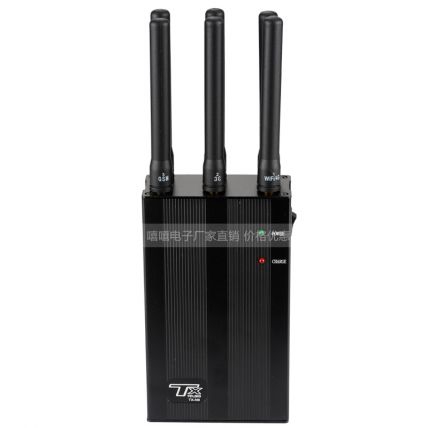What are the 5G candidate technologies
2018-07-05 15:19:31
At present, one of the hot topics discussed by system equipment providers and mobile operators is the development of next generation mobile network 5G. 5G has several candidate technologies, and some concepts will definitely be defined in the new standard in the future. Dimitris Mavrakis, the chief analyst for Ovum intelligent network, briefly introduces these candidate technologies in this paper, and analyzes the opportunities and challenges facing each technology.
The main content of this article is not to discuss what requirements 5G technology needs, but to identify several candidate technologies and related architectures that have emerged in the industry, including the direction that the 5G standard may develop. The industry's demand for 5G network has been determined, which has been outlined by 5G-PPP (European 5G public-private partnership).
For the future of 5G, the industry's bewilderment mainly includes technology, business opportunities, application in vertical industry and schedule for deployment. Moreover, most mobile operators have not found a better way to monetize LTE networks, so the future of 5G is somewhat confused.
If we review the past development trajectory of mobile communication technology, we can vaguely depict the general appearance of 5G. The new generation of mobile networks usually means a brand new architecture, which, of course, is traditionally considered to be wireless access: analog to TDMA (GSM) to CDMA (UMTS) to OFDM (LTE). Obviously, 5G also needs a brand new technology and brand new standard to solve the needs of users.
Taking into account the trend of traffic growth, 5G will need to make radical changes on the Internet. The software driven architecture, high density fluid networks, higher frequency segments, and a wider spectrum range meet billions of terminal device access requirements, Gbps magnitude capacity and so on, which can not be provided by the current LTE and LTE-Advanced networks.
Obviously, we need a new air interface. For this, ZTE is going a little farther. They suggest that the 5G network will coexist with many air interface standards. From a theoretical point of view, it is really ideal (OFDM technology is not suitable for small cell and heterogeneous networks, but other interfaces can). But from the point of view of operation and economy, this means that it will cost a lot of energy and development cost.
Of course, combined with the existing network technology development and user needs, we can only guess the future 5G technology. Now the cost problem has not risen to the scope of the discussion on the topic of 5G technology, so the 5G candidate technology can be discussed much more. The same is true of this article. First, let's leave aside the cost considerations, we will briefly introduce several technologies that have completely disruptive changes to the existing network.
The 5G candidate techniques are as follows:
* extreme tightness
Network tightness is not a new technology. When the 3G network has just encountered congestion problems at the beginning, mobile operators are aware of the need to introduce new cell in systems or sectors, which has led to the rise of a variety of similar products such as small cell, which essentially moves access points closer to users. In short, there is basically no other way to substantially increase the capacity of the entire system or the entire network.
5G networks are likely to be composed of multi-layer connections, that is, heterogeneous networks of different sizes and types: areas with low data connection rates are covered with macro stations, and areas with high transmission rates are covered with granular layers, and other network layers are interspersed in the middle. Network deployment and coordination is a major challenge because operators need exponential growth in the network layer.
* multi network collaboration
In the future, there will be multiple networks to provide connections to user terminals: mobile cellular, WiFi, terminal to terminal connection and so on. The 5G system should be able to closely coordinate these networks and provide users with an uninterrupted and smooth experience. At present, the collaboration of multiple networks is still a considerable challenge. The case of Hotspot 2 and the next generation of Hotspot will be a reference for the integration of cellular and WiFi. Whether 5G can allow the terminal to switch smoothly between several networks is still to be observed, and how to seamlessly cut from one network to another is indeed the biggest challenge.
* full duplex
All existing mobile communication networks rely on duplex mode to manage uploading and downloading, sometimes duplex, and frequency division duplex. For example, LTE FDD, its uplink and downlink needs two separate channels, and TDD, both uplink or downlink, uses the same channel, only the time slot is different.
Duplex mode is essential for coordinating the uplink and downlink, but full duplex technology is still under discussion. If this technology solution is adopted, terminal devices can send and receive information at the same time, which makes it possible to double the capacity of existing FDD and TDD systems.
Of course, this technology also has a huge challenge: we need to fundamentally eliminate self interference, and the network and equipment need great changes. If these challenges are overcome, the capacity of the entire network will increase significantly.
* millimeter wave
Now, the frequency spectrum of the low frequency segment of 450MHz - 2.6GHz is almost all used for mobile communication, fortunately, there are still a lot of high frequency band spectrum available, and this part of the spectrum is up to 300GHz. Naturally, compared with the frequency spectrum of low frequency segments familiar to operators, how to apply these high frequency bands is also more complicated. For example, the higher the frequency band is, the more difficult the building can penetrate, but a simple wall can become a barrier to the penetration of the millimeter wave signal.
However, there are some high frequency segments of the GHz spectrum already occupied: short distance, point to point, visual range connection and so on, which are used to provide a higher rate for wireless connections.
Millimeter wave can be used in indoor small cell (which is also consistent with the above mentioned network density.
Recommended Products










